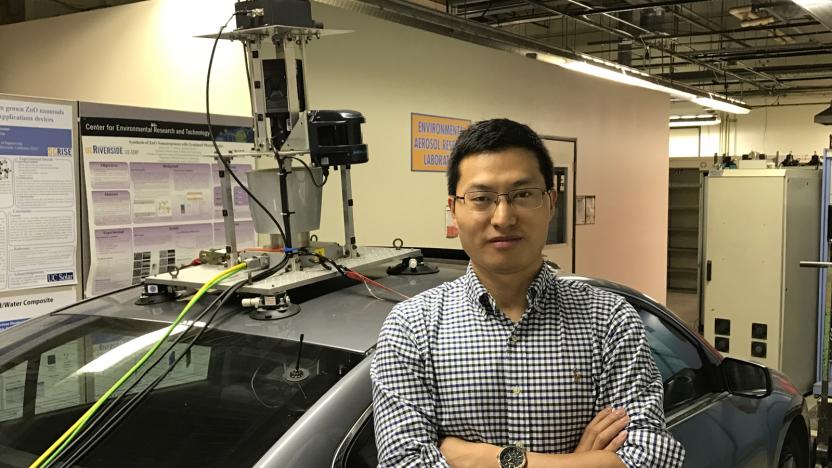universityofcaliforniariverside
Latest

Hybrid cars can save fuel through nature-like algorithms
Plug-in hybrid cars aren't as efficient as they could be. While starting in a pure electric mode is good for relatively short trips, it actually hurts your fuel economy if you have to switch to the gas engine. Science may have a solution, though, and it's taking its cue from nature. University of California, Riverside researchers have developed evolutionary algorithms that learn to combine electric and gas power for maximum fuel economy. The approach mimics natural energy-saving processes to invoke the electric motor throughout the trip, and adapts based on your driving conditions -- it should help whether you're stuck in downtown traffic or cruising effortlessly on the highway.

Scientists can build lab tools using these Lego-like blocks
A team of University of California, Riverside researchers designed a special set of 3D-printed Lego-like bricks. Unlike normal Lego that serves as building blocks for toys and gadgets, their bricks can be used to make custom instruments for labs, schools and hospitals. They call them Multifluidic Evolutionary Components (MECs), and just like a Lego set, they're comprised of different parts that make it possible to build tools for different tasks, such as pumping fluids and taking measurements.

Scientist's new rewriteable 'paper' is actually made of glass or plastic
If you ask us, the idea of rewritable paper seems pretty redundant no matter how high-tech it is. Apparently that didn't cross the mind of scientists at the University of California, Riverside. See, that's where Yadong Yin and his colleagues are using special color-switching dyes (called "redox") and an ultra-violet light to put text on a physical medium. In this case, that's a glass or plastic film like the tile above. The school says that these can be rewritten some 20 times without a significant loss in contrast or resolution, and could presumably replace the dead trees we're used to printing documents on. At this point, you're probably wondering how you erase the old text off, and that's fair -- even your favorite rubber pencil-cap won't do a thing here.

Scientists identify insects by listening to the music of their wings
It's sometimes tricky to identify insect species, but it's also important -- you want to quickly find out whether you're dealing with a disease-carrying threat or a harmless fly. That won't be an issue once UC Riverside scientists get their audio identification system into the field. Their system uses lasers to translate the fluttering of an insect's wings into an audio signal; since each wing beat has its own music-like tempo and tone, it's possible to identify critters with uncanny accuracy. You can confirm a species 88 percent of the time purely through sounds, and the rate only gets higher when you factor in the location and time of day.

Alt-week 8.25.12: robotic noses, Nodosaurs and Space X launches again
Alt-week peels back the covers on some of the more curious sci-tech stories from the last seven days. All good things come to an end, they say. Thankfully, most bad things do, too. So while the rest of the world of tech is dealing with the fallout, and possible implications of patent law, over here in the wild party that is Alt, we're fist pumping at all the awesome weekly sci-tech fodder. For example, we've got a robo-nose that can sniff out nasties in the air, a 110-million-year-old footprint found in NASA's back yard, and not one, but two space stories to reflect on. There's a hidden joke in there too, come back once you've read through to find it. This is alt-week.

University of California, Riverside runs entire building floor off of 1.1-megawatt green battery
We're used to batteries powering a lot of devices, but the University of California, Riverside is upping that a notch by charging up a whole floor's worth. The school's Winston Chung Global Energy Center is walking the eco-friendly walk and has started using a huge bank of rare earth, lithium-ion batteries from Balqon to produce 1.1 megawatts, enough to keep Winston Chung Hall's entire first floor humming along while tapping renewable energy sources like solar and wind power. The batteries bank their energy overnight, keeping the throngs of students happy without having to recharge as much or use the regular power grid as a fallback. While it's considered a testbed, the university's giant battery is considered a blueprint for cellular towers and the green power sources themselves -- the combination of which could keep your smartphone up and running with a lot less of an environmental hit. [Thanks, Justin B]



